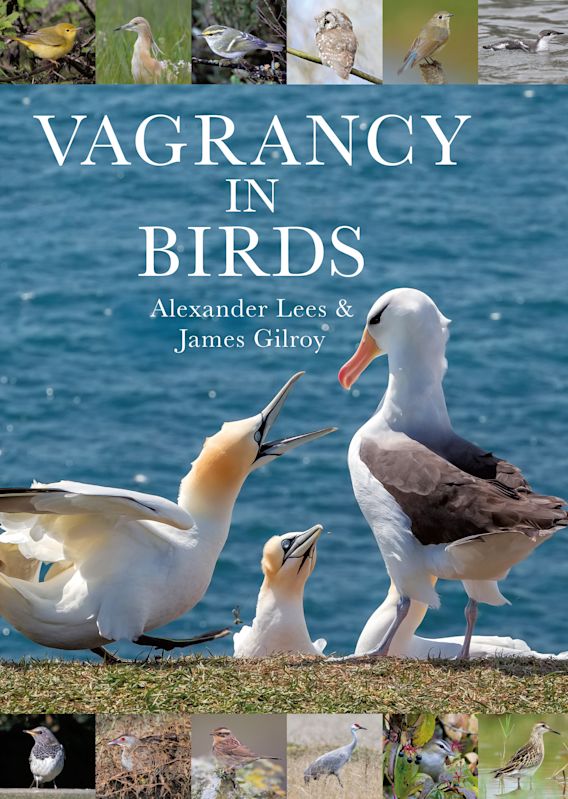
This is a scientific investigation and account of why and how birds turn up a long way from where they might be expected. It’s the science behind the biology which enables twitching to be a hobby. Both the authors are academics, both are birders – it’s a potent combination.
The book begins with a review of how birds migrate and therefore what might go wrong with that behaviour and lead to a bird arriving thousands of miles away from where it ‘ought’ to be if it had accompanied the vast majority of its fellow conspecifics. This section takes about 70 pages and is a really well-explained and accessible review. If you want to understand many aspects of bird migration (whether or not you are interested in vagrancy) then this is a good summary. I enjoyed reading this very much.
Th majority of the rest of the book (until one gets to some closing words, references and index) is given over to accounts of vagrancy for every family of birds from Ostriches (not much to see there) to Tanagers (lots going on). I feared these accounts would be very dull for me, but actually, they weren’t, they were fascinating. I’ll go back and dip into this book looking at different families at different times. These 250+ pages are also well served by plenty of good photographs of birds. I enjoyed seeing a Brambling and a Hawfinch sitting on a roof in the Pribilof Islands of Alaska as much as the Acadian Flycatcher which turned up at Dungeness in September 2015. The large number of excellent images which adorn the text add much to the attractiveness of the book.
There is a phenomenal amount of work of review and summary in compiling the family accounts. I applaud the authors for having the energy and staying power to do it.
It is entirely obvious that our common birds will be rare vagrants elsewhere in the world, since rare vagrants in the UK come from Asia, Africa and North America, but it still made an impression on me seeing a photograph of a male Blackcap feeding with mousebirds and white-eyes in South Africa. That’s how vagrancy works.
This is a fascinating collation of science and birding records. It will appeal to many who long to see rare birds in the UK but is of much wider interest too.
The cover? That works well for me – 7/10.
Vagrancy in Birds by Alexander Lees and James Gilroy is published by Helm on 9 December.
[registration_form]
I sometimes wonder if a passenger pigeon ever made it over to old Blighty, maybe in a time when there were more ‘rafts’ of interlocked trees and vegetation floating about in the ocean as potential resting places. When there were no fields of wheat, over grazed hills or for that matter concrete there would have been far more birds in the world so it would have been a twitcher’s paradise, so many more non resident or passage birds turning up – numbers and species wise – because so many more birds in the first place. This sounds like a fascinating book.
I guess that in the vast majority of cases vagrant birds are doomed to never getting back to their natural range. Presumably many die within a short time of arrival whilst others live for years as rather sad exiles – like the various sea-birds from far away that from time to time hang out and even ‘nest’ in our UK sea-bird colonies.
Occasionally, though, vagrants manage to establish new populations on the shores they reach. One such species that springs to mind is the cattle egret which has spread from its ancestral range apparently entirely as a result of vagrancy. It is now well established on every continent except Antarctica with much of its dramatic range extension having occurred during the twentieth century.
From the perspective of the history of science, at least, perhaps the most significant vagrants ever were the members of the putative ancestral flock of Geospiza finches that were cast up in the Galapagos Islands ‘one day’ and which subsequently speciated into the group of species we now know as Darwin’s finches.
One of the suggested search terms offered by my search engine is “mark avery scam”
That search term provides links to (mainly) this blog. But also a link to Avery online print services (which is a sponsored advert).
I’d be hesitant to suggest that the links can trace back to search engine rankings fostered by certain organisations that Mr. Avery has had disagreements with. If they were found out they may find out that all their listings are delisted for trying to manipulate.